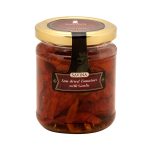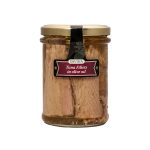Gourmet & Craft Food
Maltese cuisine is a mélange of Mediterranean taste and flavours with strong influences from centuries of Arabic and European sovereignty. Conquered by the Phoenicians, Romans, Arabs, Aragonese and the British, the tiny Mediterranean Island of Malta is a hotpot of cultural diversity.
This marriage of tastes has given Malta a fascinating blend of Mediterranean cooking. The influences are too numerous to list, but many popular Maltese specialities have a Sicilian, a North African and an Eastern Mediterranean origin. Over the centuries, all of these distinct components have been integrated into a uniquely appetising and flavourful recipe book.
Maltese food is rustic, wholesome and based on farmed, seasonal produce and the fisherman’s catch of the day. Very early in the morning one is overwhelmed with the Mediterranean aromas emanating from the smell of freshly baked bread to an array of oils, olives, tomatoes, aubergines, onions, artichokes, garlic and pungent herbs, such as basil and fennel, to mention but a few of the flavours and tastes of Maltese cooking. Every season brings with it its own aroma that is distinctly Mediterranean and a feast for your palate.
Malta’s small carbon footprint ensures a fast farm-to-plate turnover, resulting in fresh, high quality vegetables of taste and colour which beg to be transformed into delectable dishes. In recent research this Mediterranean diet has proved to be very healthy and nutritious.
Before the refrigeration period, families were inventive with the seasonal crops produced and due to lack of financial resources, most cooking was done using the “cucina povera” method, meaning that no food ever went to waste. The housewife would stock up with the seasonal gluts, often preserving or drying produce to make use of them later in the year. Amongst the specialities, one can find the Gbejniet – small cheese rounds made from sheep or goat’s milk, Tadam Imqadded – tomatoes sun-dried and salted under the scorching summer sun, Bigilla – a thick paté of broad beans with garlic, Kappar – Capers preserved in brine, Kapunata – a vegetable based Maltese version of ratatouille, Bakkaljaw – salted, preserved fish and many others.
Whatever the day offered, the traditional, crunchy, mouth-watering Maltese Bread was always on the table, either to dip and dunk it into the thick delicious tomato sauces and gravies or spread with Kunserva – a thick tomato paste commonly used in most dishes or spread over bread.
The Maltese are also popular for their consumables such as the Honey and Olive oil both harvested and grown locally, both of which are natural “liquid gold” and highly prized products.
The Maltese kitchen is also a mine of delicacies when it comes to vegetables, cheese, fish, meat, rice and pasta. From hearthy vegetable soups to tantalising pies to baked pasta or the finger-licking rabbit in tomato sauce, all dishes are a definite “must try”. And when it comes to pastry, one cannot miss out on the famous street-food available in every town and village… the delicious “pastizzi” – a cheese or meat filled, flaky pastry snack, where one is simply not enough!
If one had to question which was Malta’s traditional dish many would instantly come to mind. Favourites would be the Timpana – a pastry-covered baked pasta, Kawlata or Minestra – vegetable-rich soups perfect for the winter months, Kusksu – a soup enriched with fresh gbejniet (cheeselets) and pasta, Stuffat tal-Fenek – a rabbit stew in a thick garlicky sauce, Ravjul biz-zalza tal-Kunserva – cheese-filled ravioli with a thick tomato and garlic sauce, Qarabali bil-Patata l-Forn – stuffed marrows with baked potatoes and Lampuki – a dorado fish commonly served fried with a side of Kapunata – a ratatouille made with tomatoes, green peppers, aubergines and garlic.
There are also many fruits grown in Malta: sweet peaches, juicy melons, apricots, nectarines, blood-red pomegranates, prickly-pears, grapes and of course citrus fruits: grapefruit, tangerines lemons and oranges. At Christmas the “lumi-laring” a sweet Maltese orange is available and is particularly juicy and delicious.
Finishing off a wholesome dinner, the Maltese still find space for their desserts. Although one will find a number of sweets related to special holidays and religious festivities, (for example the prinjolata during carnival, qaghaq ta’ l-ghasel treacle and honey rings for Christmas, Qubbajt nougat stalls at every town or village festa to mention but a few), there are quite a few desserts that are consumed for no rhyme or reason! Most commonly one will find the Imqaret – date filled fried pastry, Biskuttini tal-Lewz – almond biscuits, Helwa tat-Tork – halva, Trifle – from cream to jelly and custard, Kannoli bl-Irkotta – sweet ricotta-filled canoli and Sinizza – another ricotta based cake in pastry. The list is endless and most housewives would make their own sweets from start to finish… enough to share with the neighbors too!
Dependent on its sun, land and sea, the Maltese Kitchen boasts a rich and varied nutritious table of tastes and flavours that are second to none! Buy Maltese food online – it is easy nowadays. We are here to help you out. We take care to deliver your orders worldwide.





















